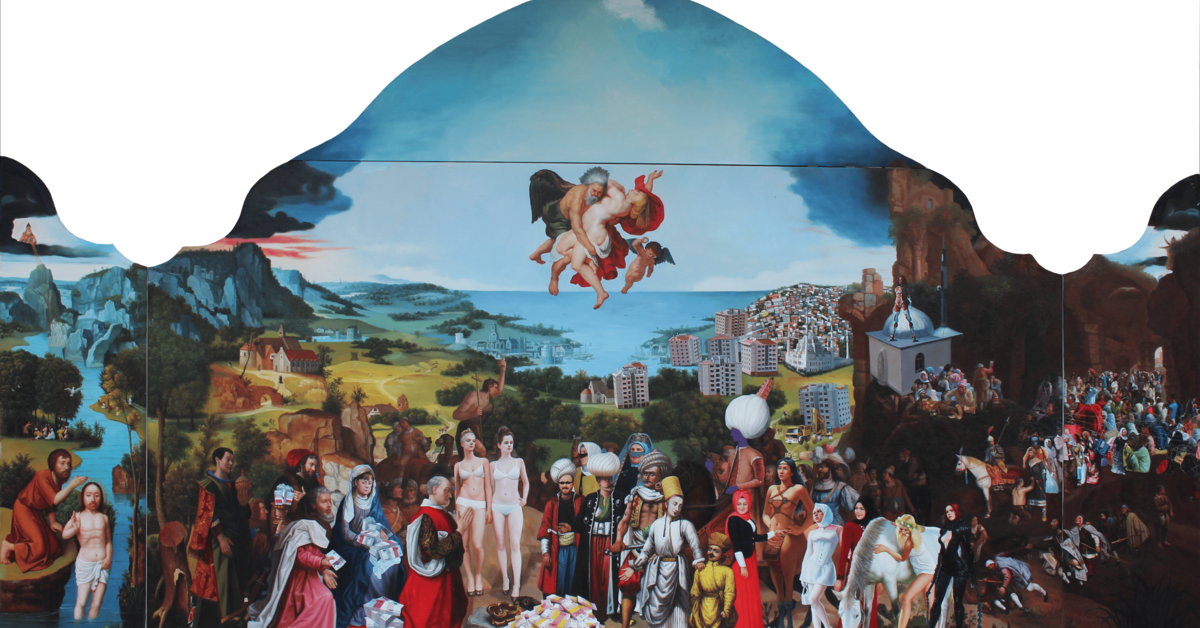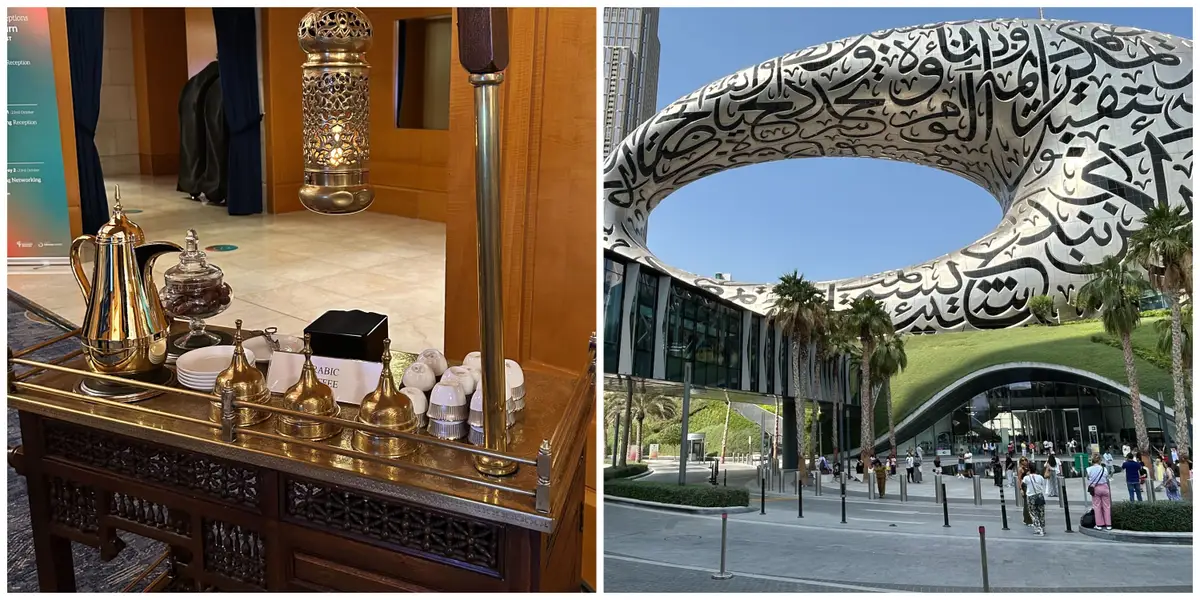Copyright Al-Monitor

Irony comes naturally to Gazi Sansoy. The Istanbul-born artist continues a family tradition of curiosity and contradiction, qualities that once defined his great-grandfather, who published a four-page Ottoman newspaper called “Muruvvet” (“The Courageous”). “My great-grandfather would finish the paper and send it to Sultan Abdulhamit’s censors, who’d strike out anything ‘unsuitable.’ He’d then rebuild it without the offensive bits, but still keep it lively and sharp,” Sansoy recalled in his Kiziltoprak studio. “One day, he fell ill, and his deputy simply printed the paper with the censored sections left blank.” The blanks were read as defiance. Muruvvet was shut down and Sansoy’s grandfather, “Ziya, the French,” was marked for exile. Yet intervening friends softened the iron-fisted sultan’s verdict: Instead of Fezzan in Libya, Ziya was banished just across the Bosphorus to Kiziltoprak, where his grandson now works, turning a family history of subversion into art. Of all Sansoy’s works, none captures that spirit of subversion better than “The Third Siege of Vienna and Refugees,” the centerpiece of the Anna Laudel Contemporary gallery's “Past Meets Present” exhibit in 2017. Shaped like a church triptych, the painting fuses Ottoman allegory with the modern migration crisis. In 2016, Ankara agreed to take measures necessary to stop people from traveling irregularly to Europe. To improve the situation of refugees and people under temporary protection in Turkey, the European Union agreed to provide a fund of six billion euros (about $6.8 billion at the time), which, in Sansoy’s multi-layered painting, lies in a heap in the center as a faceless sultan rides toward it. “I borrowed the form of church panel paintings,” Sansoy told Al-Monitor. “The angels are the ones who grieve for what’s happening; maybe they’re us.” On one side lies a serene, sparsely populated Europe, where German Chancellor Angela Merkel and other leaders kneel in grateful prayer. On the other sprawls the dense, chaotic landscape of modern Turkey, with unruly concrete blocks, satellite dishes and refugees, echoing Brueghel’s “The Blind Leading the Blind.” Among them, thinly veiled portraits of political figures, including the presidential family, stand close to the pile of money. The result is tragicomic and exacting — the 17th-century Siege of Vienna, which nearly opened Europe’s doors to the Ottomans, has become a mirror for today’s moral evasion in trading refugees for cash. The power of contrast Sansoy’s canvases often bring together improbable companions: Levni’s dervishes with Ingres’ nudes or a pop figure that vaguely resembles Madonna (the singer, not the saint), Ottoman sheiks before the chipped doors of Istanbul. “I keep digging into the past to connect it to the present,” he said. “And I do it through modern techniques, as a kind of self-criticism.” If his paintings are layered, so was his path to them. He jokes that he barely survived high school. “Physics, chemistry … I didn’t understand a thing,” he laughed. Instead, he spent hours thumbing through the art catalogs of his father, a doctor who dreamed of becoming a violinist. “I knew the works of the Renaissance masters by heart as a child,” he said. “I felt as if I were a novice at the feet of Leonardo da Vinci.” Decades later, the figures of classical art found their way to his layered paintings. In his 2014 series of Pop Miniatures, Edouard Manet’s naked female figure in “Luncheon on the Grass” serenely sits in the middle, while figures from old miniatures run toward each other. “In an old shop, I have found an old copy of Surname-i Vehbi, an 18th-century Ottoman manuscript illuminated by the court painter Abdulcelil Levni. The work portrays a dynastic series of Ottoman sultans along with miniatures of palace life, ceremonies and symbolic figures, and I thought how very modern they were, in their own way and that I could use them in a Pop Miniature series,” Sansoy said. Even in the 1990s, his prints hinted at what would come: traditional figures colliding with modern backdrops. Over time, Istanbul became a visual palimpsest: doors, stairwells and narrow streets holding both historical figures and the glow of the present. Fikirtepe Battle is an allegory of the unruly gentrification of a working class neighborhood in Istanbul. (Courtesy of the artist) Then came his large-scale narrative works, where humor sharpened into critique. In “Battle of Fikirtepe,” inspired by Istanbul’s urban transformation, he immortalized a working-class district on the city’s Asian side, which was taken up by unbridled redevelopment. Modest homes were demolished for high-rise towers, lawsuits, corruption and a skyline of half-finished dreams. “I was living in Ziverbey,” he said. “I experienced Fikirtepe firsthand. People fought, even families were divided. I couldn’t ignore that.” Sansoy believes an artist cannot remain indifferent to the time and place in which he lives. “We record time in our own way,” he said. “That’s part of our duty.” Digital Narcissus More recently, Sansoy has turned his gaze toward the tyranny of the front-facing camera. In his “Selfies” series, figures from Western art — Ingres’ harem beauties, Rubens’ cherubs — appear mid-pose, arm extended, phone glowing. “It’s the digital version of Narcissus,” he said of his series that pokes fun at the culture of self-exposure. His works, which use artificial intelligence, are more amusing than moralizing, contrasting ancient figures and state-of-the-art phones and a few cheeky references to the tradition of toilet selfies, where bathing beauties from classical paintings are perched on a toilet seat. Gazi Sansoy's "Harem," inspired by Jean Auguste Dominique Ingres' "The Turkish Bath." (Courtesy of the artist) Sansoy said he has always been drawn to contrast, East and West, devotion and vanity, faith and facade. “What makes a picture interesting is that clash,” he said. “It both attracts and repels.” He delights in placing fluorescent pigments inside classical calm because, as he noted drily, “There were no fluorescent colors back then; now there are.” When asked about artistic courage, Sansoy turned reflective. “The hardest thing in art is getting people to accept something new,” he said, invoking Marcel Duchamp and Pablo Picasso. “People always want to see what they already know. But the best thing about artists is their revolutionary side.” Then, with a grin: “I ease people into it — I show them something familiar first, then change what’s inside.”



